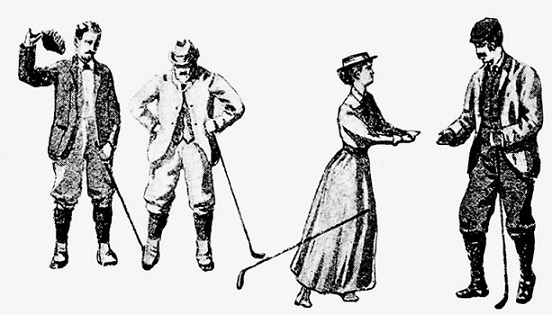Contents
Know How to write a character sketch
A character sketch is a guide, quest, and even a short story, essential for any writer of any kind. You want to develop a consistent, realistic character early on so you know how they’re going to behave in any situation.
The best stories feature characters that drive the plot, rather than a plot that drives the characters, but that’s only possible if you know who your characters are.
Method one
Brainstorming characters
- Start writing freely about your character. There is no right way to start a character sketch, as characters can pop into your head in so many ways. You might start by seeing what they look like, you can think about the profession or type of role you want to take on, or you can decide to use someone you know as a character. When designing a character, allow some time to let your imagination work, find your initial image of the character and take off from there.
You are not bound by any of these initial sketches – you can easily throw them all away. Like all brainstorming exercises, the point is to start finding ideas that you like.
- Confirm the basic appearance description of the character. It’s much easier to think in intuitive, concrete terms than to throw together abstract concepts like “friendliness” or “intelligence.” Most writers and readers usually need some kind of character image that they can relate to. If you’re artistically inclined, you can even draw your character’s basic features first. Even with little description in the final book, film, or play (“young white male”), character sketches may include:
- approximate age
- gender
- Approximate height and weight
- General ethnic background ( i.e. “tall blond Scandinavian type”)
- Define physical characteristics (hair, grooming, glasses, typical clothing, etc.)
- Think about your character’s overall mood and feelings. Complex characters display a wide range of emotions, but almost all characters can be reduced to 1-2 basic emotions. How does your personality see life in general: optimistic, greedy, humorous, angry, forgetful, considerate, timid, creative, analytical? When writing this character, you need a simple signpost—a starting point that allows you to explore other, more complex emotions as you begin writing.
How do they face difficulties? Are they strong or weak in the world? Are they making themselves vulnerable, or invulnerable?
What makes them happy sad? angry?
Sometimes authors portray their characters through the lens of psychological profiles—for example, whether they are extroverted or introverted.
- Give your character a name. Sometimes the name comes easily. Sometimes this is the hardest part of a role to pin down. While names may change throughout the writing process, there are a few different paths one can take when naming characters:
Search the internet for baby name sites such as Behind the Name or Nameberry . Most of these sites also categorize names by ethnicity, such as Japanese, Arab, French, Russian, Hawaiian, Indian, etc.
Choose meaningful names. While this is a bit dated for modern literature and film, there is a rich history of cunning or meaningful character names. See Scarlett’s Letters or Arrested Development for various humorous or insightful names .
- Identify the character’s relationship to the story, world, or main characters. Why is this character important to your book or novel? If you’re writing a character sketch about someone, it usually means they’re vital to your story, as secondary characters rarely need a character sketch. What is their relationship to the main character? How are they involved in the story? How do you feel about their contribution to the novel?
Again, this doesn’t have to be set in stone. Many writers use this space to brainstorm possible plots, conflicts, or uses a character might have.
- Develop your character’s backstory . It gives depth to your character and allows the reader to learn more about where they are coming from. Where did they grow up? What were their parents like? You may never use this information again, but as an author, you need to know these things in order to write with a believable voice. Just thinking about their childhood will tell you something about their accents, values, philosophies (or lack thereof), and more. If you’re struggling to come up with a backstory , start with a simple question. How did the characters get to where they were when the story began?
Think of a friend or acquaintance who has a personality similar to yours. What is their background ? Read biographies or real-life sketches for inspiration.
- Find your character’s primary motivation. The main thing is to know what drives your characters, because in the story they are not just a compilation of personality and physical descriptions. They are souls traveling through the world. What does your character want most? What led or motivated them to take action? This could be their principles, goals, fears or responsibilities. The best characters have agency. This means they take steps to get what they want, rather than simply reacting to the world around them. That doesn’t mean you can’t have lazy or simplistic characters— the Dude from The Big Lebowski just wants to relax, after all. Don’t mistake the desire to stay the same for a lack of desire – all characters want something that will drive them through the story.
- What are they afraid of?
- what do they want
- If you asked your character, ” Where do you want to be in five years,” what would they say?
8 Fill in any other details that pop into your head. This will change based on your story. What details about the characters set them apart? How are they different from other characters and how are they similar? This information may not make it into the final project, but it can help you develop a fuller, rounded character. Some places you might start include:
- What are their favorite books, movies and/or music?
- What would they do if they won the lottery ?
- What is their major in university?
- If they could have superpowers, what would they be?
- Who is their hero?
- Distill the character’s personality into a sentence or two. Consider a dissertation for this role. This will be the overall distillation of your character, and everything your character does should be a reflection of that statement. If you’re not sure how a character would react to a situation, you can always come back to this succinct description to guide you. Check out some examples in literature and television for guidance.
Ron Swanson (Parks and Rec ): An old-school libertarian who works for the government and wants to overthrow the government from within.
Jay Gatsby (The Great Gatsby): A self-made millionaire who made his fortune winning the love of his childhood sweetheart, with whom he is obsessed.
Erin Brockovich : A confident single mom willing to fight for what’s right, even when it’s not in her best interest.
Method Two
Use your character sketch
- Your entire character sketch won’t make it into your project. At the end of the day, a character sketch is just a guide for your writing. If you know the underlying forces that shape and shape your character, you can confidently write them into every situation without having to tell the reader everything about them.
Bits and bits of backstory , but in the end you’ll know they’re the sum of their experiences.
Readers don’t need to know everything about a character to understand them, just as we don’t need to know everything about our friends to enjoy their company.
- Illuminate your character through action as much as possible. Your character sketch is a list — informative, but not exciting. Actions are exciting, and they can show off a character without resorting to “This is Nick, he’s a writer who likes football and hangs out with his friends.” Instead, let Nick play football, maybe slacking off on the field, Or sit and chat when he should be dribbling. Find a fun, unique way to illuminate a character’s inner life instead of just talking it out.
Think of some masterful introductions — Hannibal in The Silence of the Lambs, Jung Do in The Orphan’s Son, Lolita in Lolita — and see how actions speak louder than words.
- Ask yourself why the character behaves the way you do. This is the best way to transfer a successful character from the character sheet into the story. You know what they look like, how they talk, what they do. To really make a character effective, you need to explore why they are the way they are. The answer to this question will guide you through each scene in which your character appears and help you fine-tune your character sketches as you write new episodes and storylines .
Character sketches can be changed. As you write, you may realize that you’ve done something wrong, or that you need to adjust your personality. Figuring out these changes is a lot easier if you know the overall “why” of the character.
- Write a “representative event” story about your character. It sounds complicated, but you’ve actually seen it hundreds of times before. A representative event is simply a short story that shows the reader who the character is. Usually, they appear shortly after the characters are first introduced, and may be flashbacks. This allows you to learn about their upbringing and show how they cope with stress.
Often this event is connected to a larger story. For example, a romance book might explore a character’s first love, or an action story might showcase recent quests or events.
Try to show a story that hints at how the characters will react to the events in the story.
If you’re struggling, imagine your story as this person being the main character. What details do they think are important?
- Discover the character’s voice. Look at your character sketches and ask yourself how the characters communicate through practice dialogue. Have them talk to your protagonist or other characters, and focus on making their lines seem unique. What slang do they use? Do they talk with their hands? Great writers have a way of embodying their characters, so their speech patterns bring their backgrounds to life.
If you remove all dialogue labels (“he said”, “she answered”, “Kyla asked”, etc.), can you tell which character is which?
- Use the first time you see a character to introduce their overall impact. Readers and viewers will always remember first impressions of characters. This impression should fit perfectly with the behavior of the characters in the rest of the story. For example, if a character is usually sweet and kind, don’t introduce her screaming at someone because she was in a bad mood today. If the hidden temper was part of her character, this could be perfect; but if it’s an isolated incident that doesn’t push the plot further, it just confuses the reader when she’s fine with the rest of the story .
How would the characters introduce themselves at a party or meeting?
If you met this character in real life, what would be your first impression of them?
- If you’re preparing a treat, keep your character sketches short and sweet. A handle is a short overview of a book, movie, or TV show used to sell a story. They contain an overview of the plot, its tone, and character descriptions. If you’re writing an essay, whittle down your character sketches to the bare essentials. You don’t want to share all the bizarre facts with the producer or publisher, just enough to pique their interest and give a general overview. Include only the main points, plus 1-2 short details to make the character unique. You should include:
- Name
- Relationship to plot/protagonist.
- Details related to the plot.

